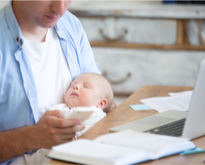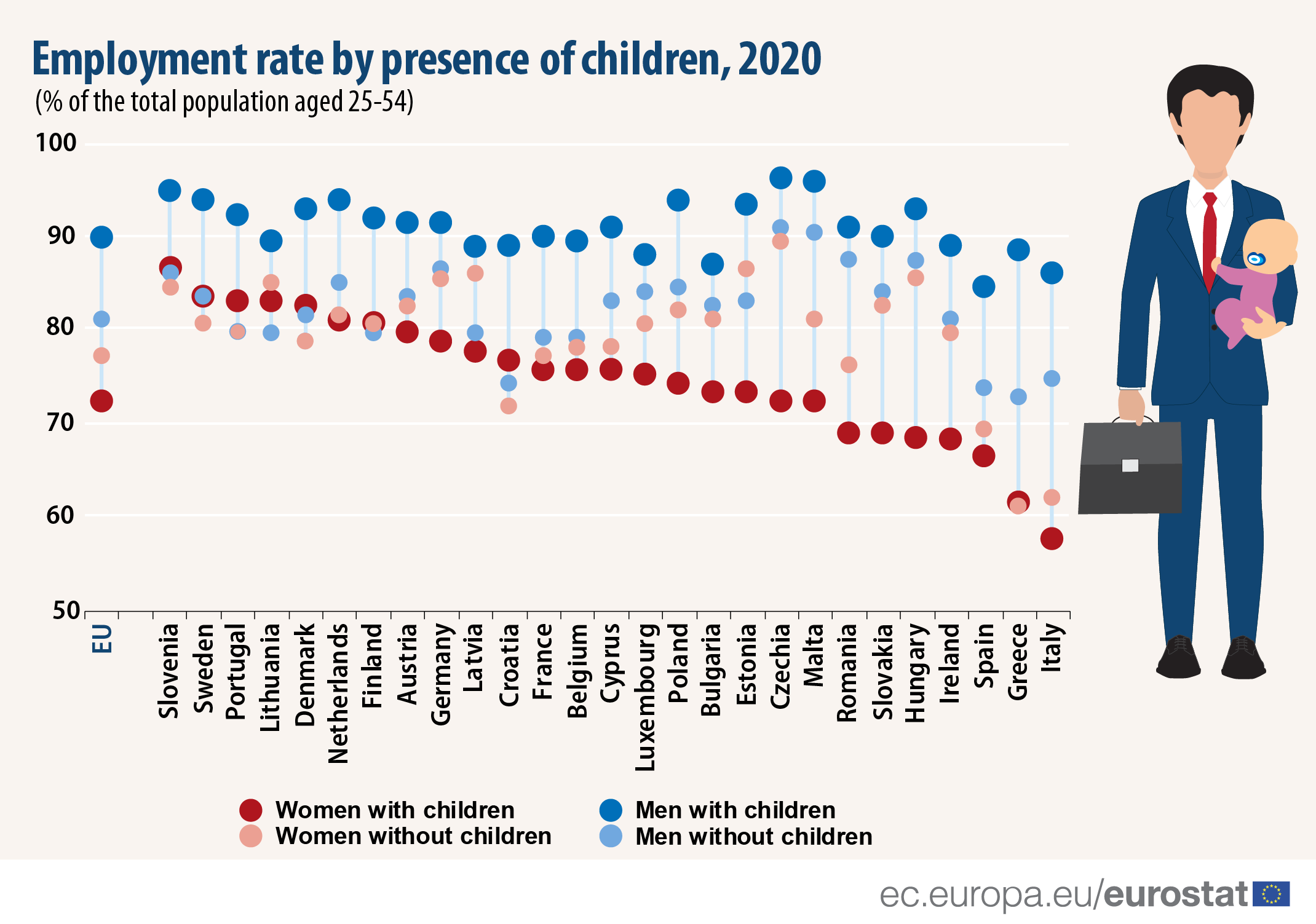
The presence of children in the household affects the employment rate of men and women differently, 2020 data shows.
Overall, 72.2% of women and 90.0% of men with children aged 25-54 were employed in the EU in 2020. In that same age category, but for people with no children, women had a higher employment rate (76.8%), while men had a lower employment rate (80.9%).
The highest shares of employed women with children were recorded by Slovenia (86.2%), Sweden (83.5%), Portugal (83.0%), Lithuania (82.6%), Denmark (82.2%), the Netherlands (80.7%) and Finland (80.3%). The lowest employment rates were reported by Italy (57.3%), Greece (61.3%) and Spain (66.2%) where less than two thirds of women with children were employed.
Men with children were employed the most in Czechia (96.5%), Malta (95.7%), Slovenia (95.0%), Sweden (93.9%), the Netherlands (93.7%) and Poland (93.5%).
Italy and Greece recorded the largest gender gaps with and without children, 28.9 pp and 12.6 pp in Italy and 27.2 pp and 11.8 pp in Greece. The lowest gender gaps for people with children were found in Lithuania (6.8 pp), Slovenia (8.8 pp) and Portugal (9.3 pp). For people without children, Portugal (0.1 pp), Belgium (0.8 pp) and Germany (1.0 pp) recorded the lowest employment gender gaps.
Source dataset: lfst_hheredty
More children linked to lower employment rate for women, especially for those with low education level
In 2020, the employment rates for women with none or up to two children were similar (around 74% on average), however the more children women had, the lower their employment rate. Women with three children or more had an average employment rate of 59.1%.
The educational attainment level plays an additional important role in the female employment rate: the higher the number of children, the wider the employment gap between women with low and high level of education. This ranged from 32.0 pp for women having one child to 48.4 pp for women with three or more children.
For men the picture is rather different: men without children were found to have the lowest average employment rate (80.9%), while the highest employment rate was found in men who had two children (92.4%), before dropping to 86.7% for men with three or more children.
Regardless of the number of children, the employment gap between men with a low and a high level of education was not as large as for women.
Source dataset: lfst_hheredch
For more information:
- Read the Statistics Explained article on the employment characteristics of households
- Overview of statistics on employment and unemployment
- Database of statistics on employment and unemployment
To contact us, please visit our User Support page.
For press queries, please contact our Media Support.



